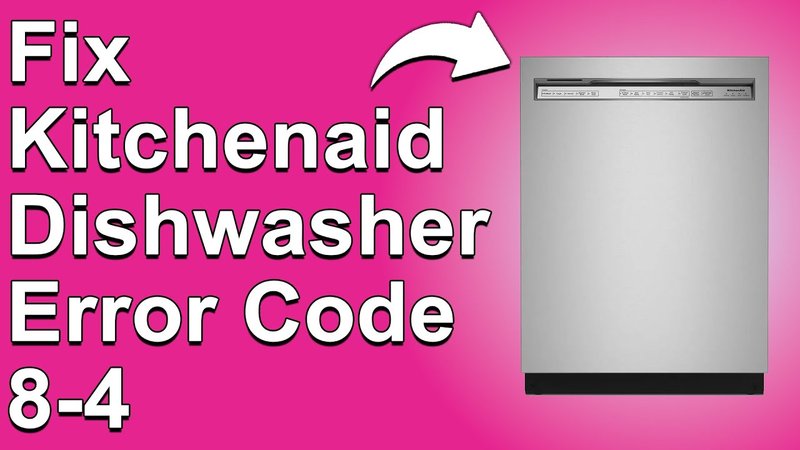
Don’t worry, though; you don’t need to be a technician to figure this out. With just a few pointers and some basic understanding, you can troubleshoot this pesky problem. We’ll walk through the common causes of this issue and give you some tips on how to fix them. So, grab a cup of coffee, and let’s demystify this error code together.
Understanding the Role of Temperature in Dishwashing
Before jumping into the causes of the E3 error, it’s helpful to understand why water temperature matters so much. Think of your dishwasher like a fancy washing machine—it needs water that’s just the right temperature to dissolve detergent, break down food particles, and kill bacteria. If the water’s too cold, it’s like trying to wash greasy dishes with cold water and no soap; things just don’t come out clean.
The dishwasher’s heating element plays a critical role in this process. This element heats the water inside your dishwasher to a specific temperature, usually between 120°F to 160°F. This heat helps the detergent work effectively, ensuring your dishes come out spotless. When the water can’t reach this temperature, the dishwasher flags it with an E3 error, essentially saying, “I can’t do my job right now!”
If you’re faced with this issue, rest assured that the most common causes are often easy to identify. It could be as simple as a power issue or something that’s obstructing the flow of water. In the following sections, we’ll explore these causes in detail and help you diagnose what might be going on with your appliance.
Common Causes of the E3 Error Code
The first thing to consider is your dishwasher’s heating element. This component can fail over time, much like a light bulb burning out. If it’s not working, the water won’t heat to the necessary temperature. Picture trying to cook pasta without a stove burner—no heat, no cooking! If the element’s faulty, it’s often straightforward for a technician to replace it, ensuring your dishwasher can heat water again properly.
Another factor could be the thermostat. This small but mighty part monitors the water temperature and tells the heating element when to turn on or off. If the thermostat’s malfunctioning, the heating element might never get the signal to start working. It’s like having a faulty alarm clock that never rings when you need to wake up. Without the thermostat’s go-ahead, the dishwasher can’t heat up, leading to the E3 error.
Lastly, consider the water supply itself. If there’s an issue with the inlet valve, the dishwasher may not be getting enough hot water. Think of it as a garden hose with a kink in it—water’s not flowing as it should. To determine if this is the cause, check that your kitchen’s hot water supply is functioning correctly. Sometimes, simply adjusting a valve can fix the problem.
Steps to Troubleshoot and Fix the E3 Error
Now that you have a grasp of what could be causing the E3 error, let’s talk about how to troubleshoot it. First, you’ll want to unplug your dishwasher or turn off the power at the circuit breaker. Safety first! Once that’s done, inspect the heating element for any visible signs of damage, like breaks or burns. If anything looks off, this part might be the culprit and will need professional replacement.
Next, test the thermostat. This might require a multimeter to check for continuity, which is a technical way to see if electricity can flow through the part. No continuity means the thermostat isn’t doing its job and might need replacement. If you’re not comfortable with this step, hiring a technician is a good idea to ensure everything’s handled correctly.
Finally, don’t forget to examine the water inlet valve and water supply. Make sure the dishwasher’s getting enough water at the right temperature. Run a tap to check the water temperature and adjust your heater if necessary. Sometimes the problem’s not with the dishwasher itself, but rather with the temperature setting on your home water heater!
Preventative Tips to Avoid Future Issues
To prevent future E3 errors, maintain proper care for both your dishwasher and your home’s plumbing system. Regularly clear the filter and ensure that no food particles are clogging the water flow. Much like how you’d clean your car windshield to keep it clear, keeping your dishwasher’s components clean ensures they function properly.
Consider scheduling regular maintenance checks for your dishwasher. A professional can spot potential issues before they become serious, much like a doctor can catch health problems early on. These preventative measures can save you not only from unexpected error codes but also from costly repairs.
Lastly, pay attention to your water heater’s settings. Ensure it’s set to provide adequately hot water, not only for your dishwasher but for other household needs. Sometimes, a minor adjustment is all it takes to maintain a harmonious kitchen routine.
By following these steps and keeping these tips in mind, you can keep your KitchenAid dishwasher running smoothly and avoid the inconvenience of the E3 error code. So, next time you see an error message, you’ll know exactly what to do!